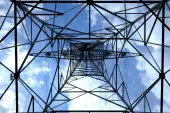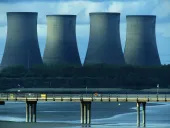
New foreign entrants give tailwinds to Vietnam's offshore wind industry
European utilities and other western IPPs are investing in Vietnam to scale up their offshore wind portfolios.
Offshore wind is shaping up to be one of Vietnam’s tailwinds in achieving its power generation target of 130GW by 2030, thanks to its resource-rich coasts, and steady access to an oil & gas supply chain. The local industry will not be the only one steering the wheel with an increasing number of investors from Europe and the US seeing Vietnam as an opportunistic space. This was shown by new megaprojects by significant Asian and European offshore wind developers like Enterprize Energy.
Elise Do, associate director at Augusta, talked to Asian Power about the motivations of these foreign investors for investing in Vietnam’s offshore wind market, the government’s direct involvement in incentivising investment, as well as a glimpse into the process of facilitating transactions in the market.
How great is the potential for investment and return in Vietnam’s offshore wind sector?
There is lots of potential, because Vietnam has a population that is nearly 100 million, coupled with very strong GDP growth that supports its power generation needs. We're looking at power generation that is currently at 47,000MW, and Vietnam will need to reach 60,000MW by 2020 and even double that by 2030. This rising underlying demand for power is obviously a huge enabler for renewable energy, but more specifically offshore wind, which can bring large increases in capacity in little time.
The offshore wind sector offers scale, but what is also important is that you need to have good wind resources, which Vietnam has. It also needs benign sea conditions and proximity to load. Vietnam, with its long coastline, has a lot of the ingredients needed to make the offshore wind sector work. Another interesting point about Vietnam is that its oil and gas supply chain is already established and that's a good base from which to build the new industry of renewable energy.
You mentioned that Vietnam has extremely high growth figures for its power sector and offshore wind. How long is this growth period likely to last?
There's still lots of potential capacity to be brought online, and also a lot more players to come. New capacity additions have been mostly driven by the local developers to date, and having international players come on board will build momentum further.
In terms of timing, renewable energy capacity, construction and grid capacity hasn’t quite caught up with the targets in place; these have been increased, but more capacity is needed.
The regional renewables sector has only just started, and I wouldn't be surprised if in the next 10-20 years we see sustained growth.
Which factors will support that growth?
The Vietnamese government is heavily involved in making renewables investments attractive. There is a 20-year feed-in tariff (FIT) in place, and the government works to approve and review infrastructure, especially offshore wind farms.
Efforts have also been made to facilitate direct power purchase agreements (DPPAs), with a pilot setup in place to support industrial power demand and guide firms towards clean energy.
All in all, however, there is still more work to be done. I know that they've also done some direct power purchase agreement (DPPA) work. They have a pilot setup for DPPAs to support the demand structure and the industry that has a high need for power and also to guide them into clean energy.
Can you describe the profile of the European and US investors that you have interacted with? What are their motivations?
European renewables are pretty well-developed and a lot of the players are looking towards Asia, initially Taiwan, and now other markets, to continue their growth. It really depends on the type of investor and their appetite.
For the utilities, it's more of a question of diversifying into new markets. For IPPs, this is also a yield play, as they are looking to increase their yields and returns on investment. Asia does offer that and it's becoming more and more interesting for investors. Taiwan has been a key growth region, and now people are looking for the next market.
Although it's still developing progressively, I think people look at Vietnam as something of an opportunistic space, that might not be one of their primary markets. But when they actually start looking at the opportunities in Vietnam, they can see that it's quite interesting in many ways, for the reasons that I've already stated - in terms of resources, proximity to load, long coast and good sea conditions.
Can you name companies or investors interested in the sector?
I can't name them directly, but essentially we can expect to see a large number of utilities and IPPs that are key players in Europe, as well as large funds looking to put money in at the development stages to secure those deals.
We also see some developers that are already active in Asia, but are looking to do more in other countries like Vietnam. We get a wide range of interest for offshore wind in Vietnam – since it can attract the players that need scale.
There aren't many offshore wind projects in the world when you think about it, so interest is driven to a greater extent by the opportunity, than the country per se, in the case of Vietnam.
Can you give an overview of the Vietnamese developers that are getting European capital for your projects? Like how was it dealing with them?
For Vietnamese local developers, renewable energy generation is usually an add-on business to their core business of real estate or manufacturing.
There are a few developers that have attracted some investment from abroad, but I would say most of it is done through international joint venture partnerships.
An interesting trend to follow will be how well the support mechanisms that are going to be in place will meet the criteria of international investors and what they're familiar with. The PPA is not bankable as it stands, but I understand that the Vietnamese government is working on the structure to see what can be done so I would say it's progressing.
Can you describe the type of companies that are attracting capital and why do you think they're able to do that?
Augusta is focused on clients that have been present in the European and US market but are moving towards Asia.
The key to attracting capital is to introduce Vietnam as one of the core offshore wind markets to investors. When you look into the details of what the Vietnamese market provides, it actually has good ingredients with which to build a wind farm that is attractive from a generation perspective.
How do you facilitate investments between the investor and the Vietnamese developer? Can you walk me through the process?
In the case of Vietnam, I think it's a good opportunity for Augusta to be looking at European investors, but also other core Asian and American investors. We help our clients form that story around the business model and development potential, which in offshore wind is strong.
It is about having a transparent dialogue with investors and understanding whether, from their perspective, a project is easy for them to understand. After that, it's about guiding these investors in terms of considering any form of investment in Vietnam, and getting them up to speed with the latest decisions from the government, policies, tariff situation and the PPA.
This advisory element is important in the fundraising process, specifically in a country like Vietnam, where there hasn’t been many developers yet, and we are supporting the first movers. It's about getting these investors comfortable with the assumptions or the business environment that they're not familiar with.
Some Asian investors that we've seen from Japan or Korea do not have renewables experience in Vietnam yet, but they may have had real estate or infrastructure experience, for example. For the rest of the world, it is a matter of getting people up to speed as to what Vietnam can offer.
Can you describe the projects in this area that you are currently working on?
We're supporting Enterprize Energy. We've worked with them in multiple jurisdictions and this builds on the deal that we've done with them in Taiwan. They're looking to set up a 3.4GW offshore wind project to be developed in separate phases. The project is looking to come on stream in 2023. It's a large project with lots of potential.
Do you see other countries in Asia with good offshore wind investment potential?
It depends on the investor you're talking to. Many are looking at Japan, Korea, and there are other markets in Southeast Asia as well that have growth potential in renewables, especially offshore wind. I think it also comes down to which market each investor is familiar with.
Having the supply chain developed in Vietnam could also be a gateway to the supply of other Asian markets when they do come on stream. The opportunities will also evolve as technology evolves. For example, we’re seeing technological advances in floating offshore wind, and that will help strengthen the business case, and the realization of other Asian markets where the waters are much deeper and more advanced technology would be needed.



















 Advertise
Advertise







